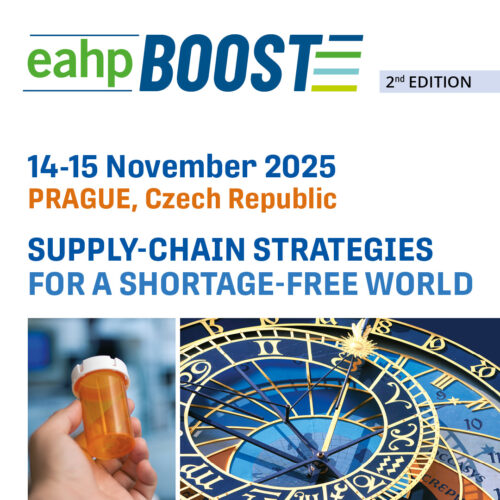Link to EAHP Statements
Section 2 – Selection, Procurement and Distribution: Statements – 2.2, 2.3, 2.5, 2.6, 2.7
Abstract
The distribution of medications is a critical aspect of healthcare; ensuring patients receive necessary treatments efficiently and safely. Hospital Pharmacy Services (HPS) play a vital role in managing medication distribution directly to inpatients and those in ambulatory settings.
For patients unable to visit the hospital, HPS may utilize other distribution channels such as hospital-at-home initiatives, community pharmacies, primary care facilities, or direct delivery to the patient’s home.
European countries have varied experiences in distributing hospital medications for outpatient care, driven by the increasing number of drugs enabling home treatment for more diseases. Integrating digital solutions to streamline the delivery process enhances efficiency and traceability. Home delivery offers significant benefits for chronic and vulnerable patients, providing comfort and convenience.
Potent drugs can now be delivered directly to patients’ homes, requiring monitoring and dose adjustments, with costs potentially reaching hundreds of euros per pill.
New distribution systems should be considered, adapting unit dispensing for short periods adjusted to the titration and tolerability validation phase. This strategy targets waste reduction, improving the financial and ecological sustainability of expensive therapies, such as oral anticancer drugs, which frequently remain unused by patients.
Anecdotal studies are exploring the potential for redistributing unused oral anticancer drugs, provided drug quality is guaranteed; new long-acting drugs appear to enhance therapeutic adherence while reducing the resources needed for their distribution and administration. Additionally, near-to-home code boxes may play a role in improving HIV treatment adherence.
Regardless of the models, the hospital pharmacist must ensure that, in addition to being more convenient, they are safe, efficient, and cost-effective.
Learning Objectives
After the session, the participant should be able to:
– Understand the challenges imposed by new drug distribution.
– Recognize the environmental and economic burden associated with the waste of new drugs.
– Promote a more efficient distribution system.
Educational Need Addressed
Optimize existing distribution systems by adapting quality management programs to new realities.
Keywords
Distribution; quality; environmental sustainability; economic burden.























